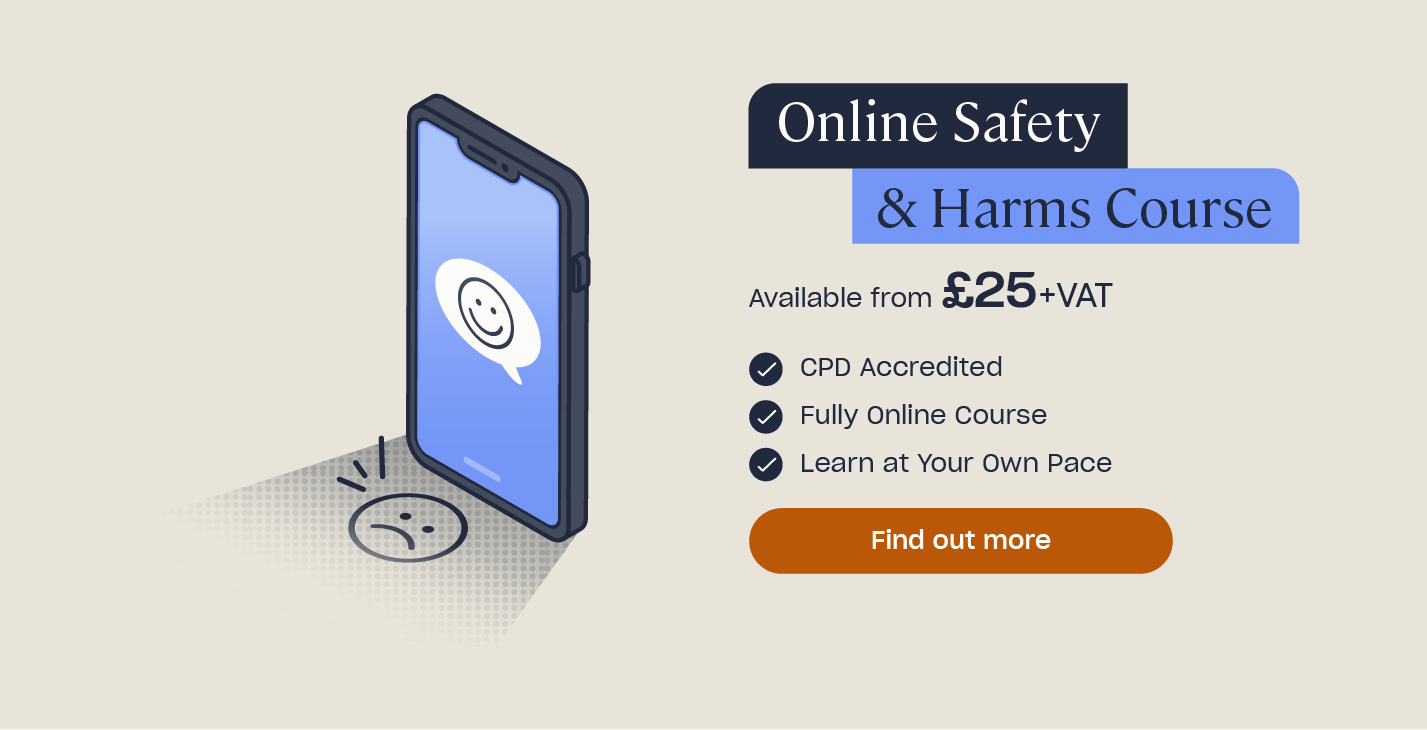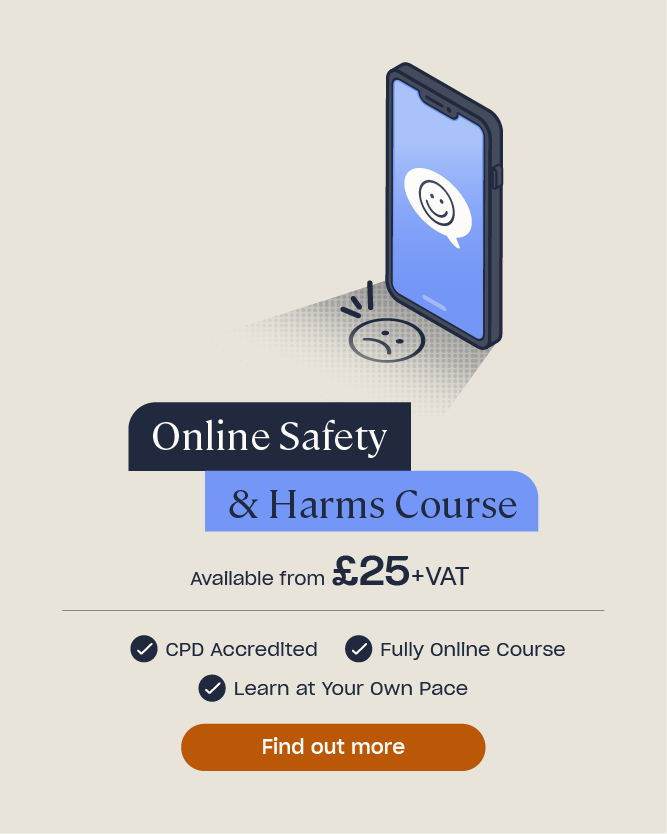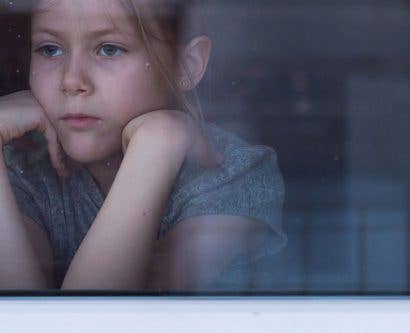What Parents Need to Know About Snapchat
Snapchat is a popular social media platform where people can share pictures and videos with friends and family. When first released in 2011, Snapchat revolutionised social media by introducing the concept of temporary messages that could only be viewed for a short period of time. The opportunity to share brief ‘snaps’ of one’s life is a principle feature of Snapchat that has bolstered its popularity, resulting in 23.67 million users in the UK alone in 2024.
However, despite its popularity, like all social media, Snapchat presents risks and dangers to young people when not used diligently and safely. In this article we will outline what Snapchat is used for and touch upon some of the concerns surrounding its suitability for young people. We will also provide guidance on the parental controls available and safety tips to help you support your child when using the platform.
What is Snapchat Used For?
Snapchat is used as a messaging platform for people to share pictures and videos with friends and family. One of Snapchat’s most unique features is that these pictures and videos are temporary and can often only be viewed once. Picture and video messages, also known as ‘snaps,’ are sent to share moments from peoples lives as they happen in real-time. The sender of these snaps can decide how long the recipient will be able to view the message and, though snaps can be replayed once, upon closing the app the snap can’t be viewed again.

Snapchat was also the pioneer of ‘stories,’ a feature that has now become incredibly popular across other social media platforms. Stories are pictures or videos that are posted for 24 hours and can be viewed countless times during that window. However, once the 24 hours has elapsed the story cannot be viewed again.
With over 600 million global users, Snapchat is an undeniably popular messaging app that connects millions of people worldwide. Whilst it’s most popular amongst 18 – 24 year olds, with them making up 37.4% of users, it is also incredibly popular amongst younger people with children aged 13 – 17 years old making up 18.3% of users in 2024.
A notable part of Snapchat’s popularity is the temporary nature of the messages. Disappearing messages create a sense of urgency that encourages people to immediately view and respond to them. Furthermore, the spontaneity of people sharing real-time moments of their lives, offers the chance to momentarily engage with friends at any given moment.
Is Snapchat Safe for Kids?
As with all social media platforms there are risks that come with using Snapchat. Given the picture focused format of the platform this can present unique dangers to young people and children. Though there is a minimum age requirement of 13 to use the app, this can be easily bypassed and isn’t necessarily enough to protect children from harm.

The potential risks of using Snapchat include:
- Child Sexual Exploitation (CSE) and Sextortion – The temporary nature of the app can embolden some people to send explicit messages or pictures as they know the images will disappear once they have been viewed. This leaves young people at risk of receiving unsolicited explicit images without their consent from both friends and strangers on the app. Young people may also be pressured into sending explicit photos of themselves. This is particularly dangerous for young people as they may not fully comprehend the ramifications of sending such images or how far they can in fact spread. Though Snapchat messages disappear, recipients can screenshot any messages that they receive, thereby making the images intended to be temporary instead permanent. Whilst users are notified if their snap is screenshot, this alone is not enough to prevent people from doing so or taking a picture of the message on another device. This can lead to sextortion in which victims are manipulated, either through blackmail or coercion, to send, or continue sending, explicit images of themselves. Children may also not recognise that what is happening to them is a form of exploitation. This is particularly true if they have a limited understanding of what a healthy relationship looks like and so they may think that what is being asked of them is normal for a relationship.
- Cyberbullying – As with all social media platforms Snapchat brings with it the risk of cyberbullying. This risk is arguably exacerbated by the temporary nature of the app as this can motivate some to send hurtful messages and offensive images which will disappear upon viewing. This can make it difficult to prove that bullying has occurred. Moreover, the popularity of the app and a general lack of maturity amongst some young people, can make others more willing to participate in the bullying, such as sharing snaps mocking an individual in order to ‘fit it.’

- Location Accessibility – Snapchat’s feature Snap Map shows the location of friends wherever they may be in the world. Though this is intended to create a sense of community, it can also be used to track people at all times. If not used properly, or with settings such as Ghost Mode which hides people’s location, strangers may be able to track a user’s location and monitor their whereabouts.
- Screentime Addiction – All social media can be addictive and platforms are intentionally designed to trigger dopamine when using them so that people keep using them. The release of this hormone with every swipe and share increases the chances of screentime addiction. Snapchat has unique features which make people even more susceptible to addiction. For example, Snapchat streaks encourage people to keep sending snaps by rewarding them for maintaining long streaks. The gamification of streaks encourages young people to stay on the app and maintain them, regardless of whether it is at the expense of other activities.
- Snapchat Dysmorphia – In 2018 news swept the headlines of a new phenomenon called ‘Snapchat Dysmorphia.’ The phrase was coined after plastic surgeons noticed an increase in the number of patients coming in who wanted surgery to look like their filtered selfies. Snapchat filters are a popular feature of the app and enable people to change their appearance. Though arguably intended to be harmless fun by allowing people to adopt dog ears and kitten whiskers, over time the filters have been used to make more significant changes to someone’s appearance. There are countless different filters to choose from and people can choose whether they want to smooth out their skin, thin their face or even change their eye colour. However, what may be harmless experimentation for some, can result in severe body image problems for others, especially young people.
Want to Learn More?
Our Online Safety & Harms training course teaches you everything you need to know about the potential online risks and harms children face, providing you with the tools to recognise the signs of harm or abuse and keep the children around you safe.
Does Snapchat Have Parental Controls?
Like most social media platforms, Snapchat has a range of parental controls to provide parents and guardians with the peace of mind that their children are safe on the app. Snapchat’s Family Centre enables parents and guardians to set different controls to protect their children and limit interactions with strangers.
Using Snapchat’s Parental Controls, parents and guardians can:
- See their child’s friends on the app.
- See who they have messaged in the past seven days.
- Report accounts on their child’s friend list if they have concerns about the individual.
- Restrict sensitive content from public stories or Spotlights.
- Track their child’s location via Snap Map.

Though Snapchat Family Centre does provide a level of control over a child’s use of the app, there are some limitations. Firstly, parents and guardians must have their own Snapchat account before they can set up any kind of parental controls. You will then need to add your child to your friends list which must be approved by them. Moreover, whilst you can see who your child has messaged in the last seven days, you can’t read the message or see the images/videos that have been sent. Furthermore, if your child decides to post content to a private story you will not be able to see it unless they add you to that group.
Irrespective of these limits, Snapchat’s Family Centre provides essential basics to keep your child safe. It’s important to remember that the intention when protecting your child isn’t to monitor their every move. Not being able to see what they send, respects your child’s right to privacy and allows them to use the app for its intended purpose without fear they might be unjustly reprimanded.
You can read more about Snapchat’s policies to safeguard teens and young people here.
Snapchat Safety Tips
Along with Snapchat’s Family Centre there are many other steps you can take to help keep your child safe whilst using the app. Below you will find five top tips that can help protect your child on Snapchat.
- Talk to them – Talking to your child about general online safety is the best way to reduce risk. This advice can be applied to a myriad of social media platforms and can be more general, such as only interacting with known contacts and informing an adult immediately if they notice anything suspicious or are being subjected to bullying or harassment. If your child doesn’t understand the potential risks of using Snapchat they are less likely to follow your rules. Take the time to talk to your child about the steps they can take to ensure they are using the app safely. The goal isn’t to scare your child into not using it, but to be realistic about potential dangers. The temporary nature of the app can easily lull a child into a false sense of security that once what they have sent has been viewed, it is lost to the ether of the internet forever. However, snaps can easily be screenshot and held in perpetuity, so talk to your child about what is and isn’t appropriate to share on the app. It’s helpful to remind your child that everything they send could potentially be saved, so to only send images with this in mind.
- Follow minimum age requirements – The minimum age to use the app is 13. Snapchat has a range of features intended to protect young people, however these features only appear as a default for certain ages. If your child creates a Snapchat account and lies about their age, they will not have the age-related default security settings intended to keep them safe.

- Set rules – Before your child starts using the app clearly set out your rules. These rules may pertain to who they can and can’t contact, how long they spend on the app, what they send images of or checking friend requests with you first. As mentioned above, talking to your child about why these rules are in place means they are more likely to follow them. It is also important to make your expectations clear so that there is no ambiguity and your child fully understands the consequences of them not following your rules. Nevertheless, try to avoid setting too many rules or your child is liable to feel suffocated and like they can’t enjoy the app for its intended purpose.
- Monitor usage occasionally – It is important to respect your child’s right to privacy, however it is common for children to hide things from their parents and guardians. This could range from innocent topics such as school crushes or harmless teasing, to more serious things such as inappropriate messaging with older strangers or cyberbullying. Occasionally monitoring your child’s use of the app allows you to check in with their activities and reiterate what behaviour is and isn’t appropriate on the app. By ensuring that you only do this occasionally, you are showing your child that you trust them to make the right decisions and your check-ins can then become a chance for them to prove that they are following the rules as expected.
- Explain available safety features – Understanding how new apps work can be daunting for anyone, let alone older generations. However, Snapchat, like most social media, has a range of safety features that once you know how to use them, are easy to implement. Showing your child how to use certain features, such as blocking people or reporting upsetting or inappropriate content, emboldens them to continue using the app, safe in the knowledge that they know how to protect themselves. Don’t assume that your child automatically knows all the safety features of the app as it is not necessarily something they are actively looking for. Instead, take the time to show them or to learn how to use safety features with them, so they have the necessary tools to keep themselves safe.

Snapchat is a popular messaging platform which enables users to share real-time moments from their lives with friends and family. As with all social media platforms, there are risks that come with using it, but the temporary nature of the app presents particularly unique dangers to children and young people. However, by utilising the features provided by Snapchat, communicating with your child and following the tips provided, you can help to ensure they use Snapchat safely.
Further Resources:
- A Guide to Emojis and Texting Abbreviations
- How to Explain Internet Safety to Your Child
- Online Safety & Harms Course











